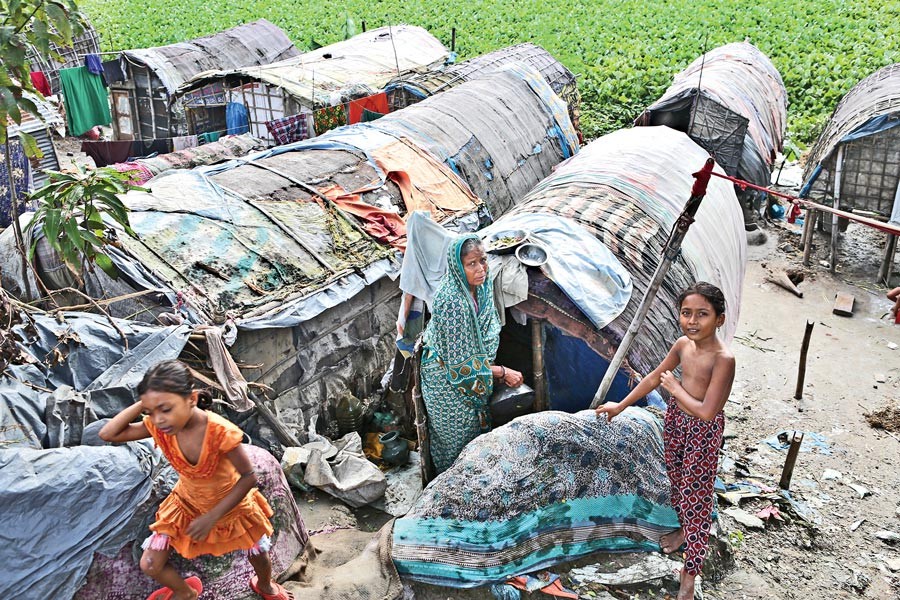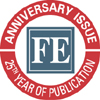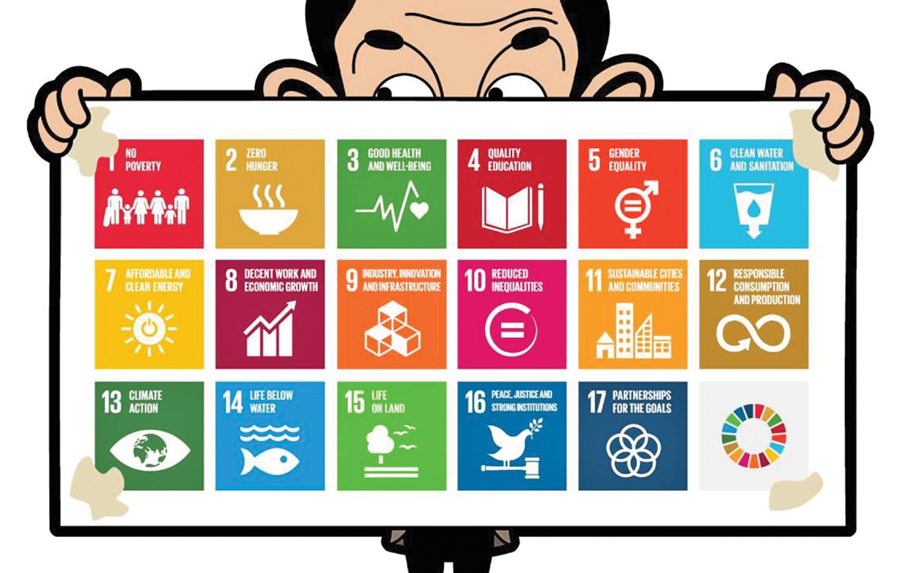 A core challenge of SDGs is to lift people out of extreme poverty. — FE Photo
A core challenge of SDGs is to lift people out of extreme poverty. — FE Photo  Bangladesh's economy has grown at an impressive rate of around 6.0 per cent or above for the last decade and its progress in attaining several MDG targets, especially in social indicators, was markedly better than that of many countries. The impressive performance of the economy in the 2000s onward is thought to be a result of major trade- and financial-liberalisation programmes undertaken in the 1990s with supports from multilateral funding agencies. Such reforms created conditions for improved investments, including foreign direct investment (FDI), sound macroeconomic growth and balance of payments. Besides, various reform measures undertaken in project management, procurement and implementation yielded various positive development outcomes.
Bangladesh's economy has grown at an impressive rate of around 6.0 per cent or above for the last decade and its progress in attaining several MDG targets, especially in social indicators, was markedly better than that of many countries. The impressive performance of the economy in the 2000s onward is thought to be a result of major trade- and financial-liberalisation programmes undertaken in the 1990s with supports from multilateral funding agencies. Such reforms created conditions for improved investments, including foreign direct investment (FDI), sound macroeconomic growth and balance of payments. Besides, various reform measures undertaken in project management, procurement and implementation yielded various positive development outcomes.
The country received donor support in the early decades of its independence, averaging annually US$1-1.5 billion. With accelerated pace of growth the following economic reforms, the importance of aid has decreased to some extent. In particular, food and commodity aid which dominated the aid basket in the 1970s and 1980s, declined sharply with improvement in food production. Since the 1990s, donor support had mainly concentrated on project and programme aid linked to the agreed policy reforms.
 Nonetheless, the declining trend in aid to Bangladesh is consistent with the global scenario. For example, as a percentage of gross national income (GNI), official development assistance (ODA) has been dwindling in South Asia, especially in India, Pakistan, Bangladesh and Sri Lanka. The flow of aid is still high in some conflict-ridden countries including Afghanistan. However, Bangladesh receives a much lower amount of aid compared to its least-developed country (LDC) counterparts, which is attributable to-improved economic performance.
Nonetheless, the declining trend in aid to Bangladesh is consistent with the global scenario. For example, as a percentage of gross national income (GNI), official development assistance (ODA) has been dwindling in South Asia, especially in India, Pakistan, Bangladesh and Sri Lanka. The flow of aid is still high in some conflict-ridden countries including Afghanistan. However, Bangladesh receives a much lower amount of aid compared to its least-developed country (LDC) counterparts, which is attributable to-improved economic performance.
Foreign aid finances fiscal deficits and contributes to tax-revenue earnings by financing imports and spurring growth. During the 1980s, the fiscal deficit came down from a 6.6 per cent of GDP to 5.4 per cent, and afterwards, in most of the years, fiscal deficit had remained within 5.0 per cent of GDP. While total government expenditure increased from 12.5 per cent in 1990 to about 17 per cent in 2015, the tax-GDP ratio increased from 6.0 per cent to about only 10 per cent during the same period. With an increased level of government expenditure coupled with increased tax revenue, the direct contribution of aid to financing fiscal deficit declined from 80 per cent in 1990 to about 40 per cent in 2015. Net foreign financing in deficit finance was more than 75 per cent before 1990, which indicates the overwhelming importance of aid in maintaining fiscal stability in Bangladesh.
Foreign aid assistance for Bangladesh has been on the decline since the 1990s in terms of both composition and its share in GNI. The aid as percentage of GNI was estimated to be 6.72% during the 1990s which significantly declined to 2.4% and further went down during 2014 to 1.14%. The external funding structure mainly consists of four types of aid: project aid, budget support, commodity aid, and food aid.
The transformation of the Bangladesh economy happened in a series of steps, which has been reflected in the changing composition of aid over time. Food aid has declined due to attaining self-sufficiency in food production. Similarly, commodity aid has also been significantly reduced after 2004-05 due to increased export volume, tax-revenue growth and consistent rise in foreign remittance. There had been no inflow of commodity aid since 2005-06. Hence, it can be seen that as of 2015, project aid constituted about 98.8% of total aid and the rest is food aid. During the 1980s, while food and commodity aid could be seen dominate the aid basket comprising a total of 51.1%, the latter amount being project aid comprised 48.9%. As Bangladesh matured over the years, the composition of aid showed a shift, with project aid taking over the main portion.
Historically, the share of project aid depicts an allocation within 25% of total project value across sectors. A shift in aid allocation to different sectors has also been observed over time with a shift of development priority of the government. The key sectors that received higher aid allocations in the 1990s were power, transport, water resources, industry, oil, gas and mineral resources. From 2000 onward, some sectors like industry, oil, gas extraction, water resources etc. got less project-aid allocation in the context of changing scenario. Along with infrastructure projects, aid also went to various projects that are related to MDG targets such as health, education and rural development, specifically, poverty reduction.
In order to accelerate economic growth, alleviate poverty and fulfil other Sustainable Development Goals (SDGs), official aid alone cannot be considered an adequate funding effort. The private-sector needs to be focused on as a driver towards growth and employment generation. If aid efforts were dedicated towards catalyzing innovative financing solutions for the private-sector, it could lead to private-sector development. Funding the SDGs would require increasing the investment rate above the domestic savings rate, as well as utilising additional foreign financing to bridge the financing gap. Among private-sector flows, workers' remittances, foreign direct investment (FDI), portfolio debt and equity flows and lending from foreign banks and philanthropic funding from various private donors like Melinda-Gates foundation, CSR activities and other foundation activities could be noteworthy.
The Seventh Five-Year Plan presents the overall financial estimates of the investment requirements to achieve the objectives of the plan. While 78% of the total financing is estimated to be mobilised from the private sector, the rest 22% would be financed from public sources. Overall, gross investments are set to be increased by 32% of GDP on average per annum during the SFYP period, of which 24.7% are expected to take place from the private sector and 7.3% from the public sector. While the current public-sector investment is about 7% of GDP, which is very close to the target, the main challenges lie with the increase in private-sector investment, which has been stalled at about 22% of GDP for quite a long time. Among the projected resource requirements, 90% of the total financing requirements are expected to be met from domestic sources and the rest 10% from external sources.
During FY 2014-15, the disbursement of foreign aid as a percentage of pipeline opening balance was reported at 16.74% which had decreased by 1.8% in comparison to the previous financial year. However, opening pipeline consists of commitment of aid to be disbursed in about 3-5 years and in that case ratio of disbursement over opening pipeline might provide misleading scenario. It is rather better to look into the ratio of disbursement over actual commitments for the respective year.
Discrepancies in the disbursements and commitments have led to a substantial amount of the committed aid to remain in the pipeline, making it extensively large. Low levels of disbursement often hinder project implementation, which leads to cost escalation and delayed project outcome. It can be observed that the rate of disbursements of committed aid declined to below 40% in recent days. The current pipeline reporting is somewhat misleading, so it should be improved to give a true picture of pipeline of aid or development cooperation.
Multilateral agencies such as the ADB, the World Bank (IDA) and UN System are the main sources of foreign assistance in Bangladesh although the role of bilateral sources such the governments of Japan, the United Kingdom, and Canada is also significant. The two main sources of multilateral aid for Bangladesh are the World Bank (IDA) and the ADB, which have provided assistance largely, though not exclusively, from their concessional windows. However, the terms and conditions of the International Development Association (IDA) and the Asian Development Bank have been tightened in recent times considering her economic progress, which allows Bangladesh to borrow from both concessionary and non-concessionary windows in keeping with its strength in repayment of loans. From 1999 to 2014, the percentage share of multilateral aid has been seen increase as bilateral aid subsequently declined. As of 2015, multilateral agencies provided 68.9% of total aid, while the share of bilateral aid was 31.1%.
Given the situation, Bangladesh needs to maintain strong development cooperation with non-traditional financiers such as China, India, the Islamic Republic of Iran, Kuwait, Malaysia, Saudi Arabia, Turkey, and the United Arab Emirates. It has also developed strong relations with Development Assistance Committee (DAC) member-countries, namely Japan and the Republic of Korea since 2001. Bangladesh has mobilised $2.16 billion through official assistance from non-traditional donors out of which $1.34 billion is loan and $819 million grants. The efforts need to be continued and strengthened.
With regard to external resource framework, the following four types of external resource flows from both public and private sectors need to be taken into account: (i) portfolio equity flows consisting of bond and equity (i.e. developing country company share purchase); (ii) commercial bank lending from developed to developing countries; (iii) FDI, remittances and physical investment by non-residents to developing countries; and (iv) Official flows consisting of aid, grants, concessional and non-concessional credits given to developing countries by donor agencies and countries. The targeted investments for implementing SDGs by 2030 will require financial resources to be much higher than what is required for implementing the SFYP investment targets.
Though the significance of ODA has been shrinking, still it constitutes the biggest and predictable part of total external resources, much of which lies with the effective utilization of committed ODA flows during stipulated time-frame. Though a pipeline consists of ODA that are committed to be disbursed within one to five years, some parts of such assistance remain unutilised due to various problems including delay in project implementation. ODA currently constitutes about 50% of total public external resources available and the share of ODA would have increased substantially if the pipeline funds had been utilised fully in time.
Therefore, the key strategy for external resource mobilisation would be to utilise the pipeline almost fully during the stipulated time-frame. The problems that are often cited as obstacle to utilising pipeline include lack of project-preparatory funds, faulty DPP, tailback in consultant recruitment, lack of proper monitoring mechanism of project implementation etc. ERD has already taken some initiatives and some are in progress to overcome some of the problems.
In addition to ODA mobilisation, some other internationally recognized alternative options for financing need to be explored. For example, issuing different types of bonds, such as sovereign bond, diaspora bond and GDP-indexed bond, exploring south-south and triangular cooperation, harnessing aid for trade, climate-change fund, SAARC Development Fund etc. Nonetheless, the options have both opportunities and risks and therefore need careful assessment beforehand.
Considering the global aid scenario and declining domestic aid trend, official aid alone is not adequate to accelerate economic growth, alleviate poverty and achieve other Sustainable Development Goals (SDGs). A key strategy for financing SDGs would require increasing the investment rate above the domestic savings rate, and bridging the financing gap with additional financing from abroad. This requires efforts to identify the available alternative sources of development financing considering the declining trend in traditional funding.
The Economic Relations Division has been working on developing a strategy with which the author is closely linked. This strategy envisages the need for developing an integrated resource-mapping framework, as suggested in the DFA, 2016 that will serve as a basis for better resource-mobilisation strategies.
Currently, the financing requirements are shown on piecemeal basis and therefore it lacks coordination and coherence among various financing approaches. An integrated financing structure will help understand an integrated resource mapping of the country that may be used for effective monitoring of resources. An integrated financing structure includes both income and expenditure flow of finances that could be utilised as the basis for overall resource mapping.
Dr Monzur Hossain is Senior Research Fellow at Bangladesh Institute of Development Studies (BIDS). [email protected]
© 2024 - All Rights with The Financial Express
